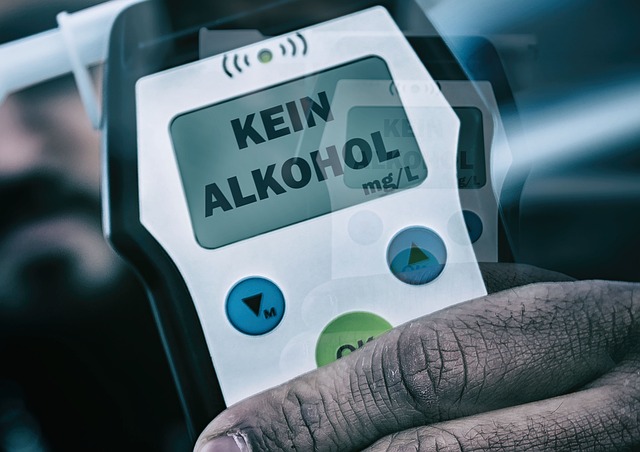In the digital age, social media's role in daily life intersects with drunk driving (DUI) laws, creating complex scenarios. Posting about alcohol consumption online can lead to severe legal consequences, as law enforcement monitors social media for DUI evidence. Individuals facing DUI charges must be mindful of their digital footprint. The transportation sector has seen a rise in alternative transit options like ride-sharing, electric scooters, and bike-sharing, influenced by consumer preferences, technology, and environmental concerns. This shift presents legal considerations, especially regarding responsible drinking and safety campaigns using social media. Ride-sharing services prioritize safety through rigorous driver screening, background checks, and technology like real-time tracking. Social media interactions can significantly impact DUI cases, making digital literacy crucial for both defendants and legal professionals. Advocacy groups and law enforcement use social media to promote DUI prevention, but effective navigation requires addressing myths and focusing on legal aspects. Global cities adopt alternative transit programs, learning from successful initiatives like Amsterdam's bike lanes and Copenhagen's walkable planning, which decrease traffic congestion and accident rates while fostering safer, more sustainable communities.
In today’s digital age, understanding the interplay between social media and DUI legal aspects is crucial for fostering safe transit options. As alternative transportation methods gain popularity, from ride-sharing apps to designated driver programs, ensuring passenger safety becomes a collective responsibility. This article explores the rise of alternative transit, delving into best practices, legal protections, and case studies showcasing successful implementation. By balancing social media engagement with strict DUI laws, we can revolutionize safe travel habits.
- Understanding DUI Laws and Social Media: A Delicate Balance
- The Rise of Alternative Transit Options
- Ensuring Safety: Best Practices for Ride-Sharing Services
- Legal Protections for Passengers: Rights and Responsibilities
- Navigating Social Media in the Context of DUI Prevention
- Case Studies: Successful Implementation of Alternative Transit Programs
Understanding DUI Laws and Social Media: A Delicate Balance

In today’s digital era, where social media platforms play a significant role in our daily lives, understanding the legal aspects surrounding Drunk Driving (DUI) and its intersection with online behavior is crucial. While sharing experiences and raising awareness about responsible drinking can be beneficial, posting while under the influence or even just after consuming alcohol can have severe consequences, especially when it comes to DUI charges. It’s a delicate balance; social media users must exercise caution and remember that what they share online could potentially impact their off-line lives, particularly in legal matters.
The legal implications of Social Media and DUI are vast. A simple post or update about a night out drinking might attract the attention of law enforcement if it suggests impaired driving. Additionally, many jurisdictions now actively monitor social media for evidence of DUI offenses, which can lead to stricter penalties and increased prosecution. Therefore, individuals facing potential DUI charges should be wary of their digital footprint and understand that sharing details about alcohol consumption online may not always be in their best interest.
The Rise of Alternative Transit Options

In recent years, the transportation landscape has witnessed a significant shift towards alternative transit options, driven by evolving consumer preferences, technological advancements, and growing environmental concerns. Traditional modes of travel are no longer the sole domain; instead, we’re seeing a surge in popularity for innovative solutions like ride-sharing services, electric scooters, and bike-sharing programs. This trend is not just a passing fad but a lasting change, influenced by factors such as convenience, cost-effectiveness, and sustainability. As these alternatives gain traction, they are reshaping urban mobility and challenging the status quo.
The rise of alternative transit also intersects with critical legal considerations, particularly when it comes to responsible drinking and transportation. Social media plays a significant role in this context, as platforms like Instagram and Twitter have become channels for public awareness campaigns promoting designated drivers and alternative transit options to prevent drunk driving (DUI). Understanding the legal implications of these emerging trends is crucial to ensuring both safety and compliance.
Ensuring Safety: Best Practices for Ride-Sharing Services

Ensuring safety is paramount for ride-sharing services, as they navigate the intricate balance between convenience and security. Best practices involve rigorous driver screening processes, including verifying identification and checking for any legal barriers like a DUI (Driving Under the Influence) history. Regular background checks and ongoing monitoring are crucial to maintain a safe environment for passengers.
Social media integration plays a dual role here. It aids in customer service by enabling quick communication with riders. However, it also presents challenges, as privacy concerns and public scrutiny require robust data protection measures. Additionally, leveraging technology like real-time tracking and advanced security systems contributes significantly to mitigating risks, fostering trust, and upholding the legal aspects related to ride-sharing services, especially in scenarios involving alcohol consumption or other potential safety hazards.
Legal Protections for Passengers: Rights and Responsibilities

Navigating Social Media in the Context of DUI Prevention

In today’s digital era, social media platforms play a significant role in various aspects of our lives, including raising awareness for public safety initiatives like DUI (Driving Under the Influence) prevention. These online spaces offer unique opportunities to educate and engage audiences about the legal implications and personal risks associated with operating a vehicle while impaired. By leveraging these platforms, advocacy groups and law enforcement agencies can reach a wide and diverse audience, sharing important messages that could save lives.
However, navigating social media in the context of DUI prevention also presents challenges. It’s crucial to dispel myths and correct misconceptions that may circulate online. Additionally, ensuring accurate and responsible messaging is key to avoiding misinformation. Engaging with users through interactive content, such as infographics or personal stories, can enhance the impact of these campaigns. Utilizing hashtags related to #DUIPrevention and #SocialMediaResponsibility can further amplify these efforts, fostering conversations that promote safer alternatives for transit options.
Case Studies: Successful Implementation of Alternative Transit Programs

In recent years, numerous cities worldwide have successfully implemented alternative transit programs, demonstrating innovative approaches to transportation safety. These initiatives often focus on reducing motor vehicle dependency and promoting public, active, and shared mobility options. For instance, Amsterdam’s extensive network of bike lanes and robust public transport system has significantly lowered traffic congestion and accident rates. Similarly, cities like Copenhagen have pioneered walkable urban planning, encouraging residents and visitors alike to opt for walking or cycling as primary modes of transportation. These case studies highlight the positive environmental and social impacts of alternative transit options, including reduced air pollution and enhanced public health.
When discussing the legal aspects related to Social Media and DUI (Driving Under the Influence), these successful implementation stories offer valuable insights. Many jurisdictions have adapted their laws to accommodate new mobility trends, such as ride-sharing services and electric scooters. This evolution in legislation ensures that alternative transit programs can thrive while maintaining public safety standards. By learning from these case studies, urban planners and policymakers can navigate the intersection of innovative transportation and legal considerations, ultimately fostering safer and more sustainable communities.
In conclusion, the integration of alternative transit options with a focus on safety is a multifaceted approach that addresses both social media’s role in DUI prevention and the legal aspects surrounding it. By understanding DUI laws, leveraging technology responsibly, and implementing best practices for ride-sharing services, we can create a safer transportation network. Legal protections for passengers further reinforce these efforts, ensuring everyone’s rights and responsibilities are respected. The case studies presented highlight successful implementations, offering valuable insights for cities looking to reduce drunk driving incidents and promote responsible mobility. Balancing social media engagement with effective legal strategies is key to fostering a culture of responsible drinking and transit choices.






